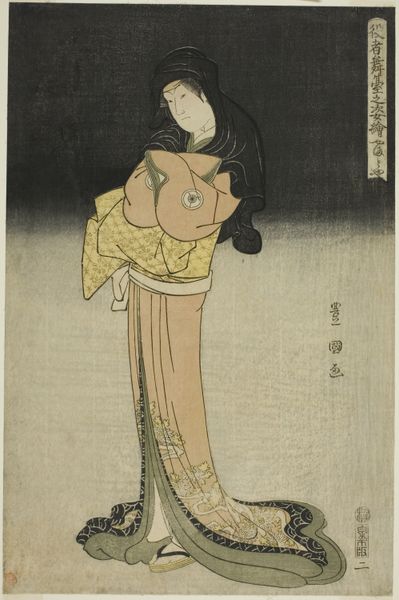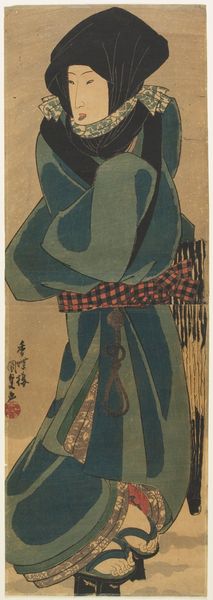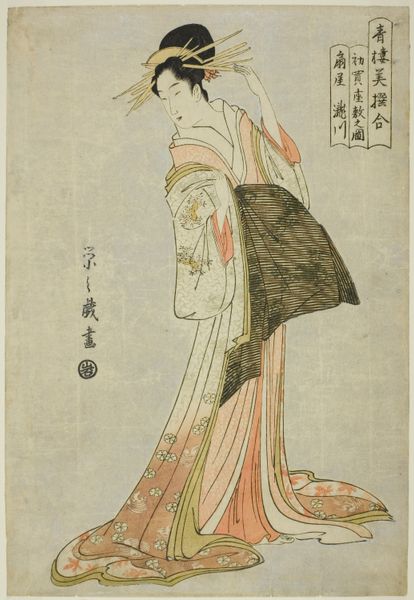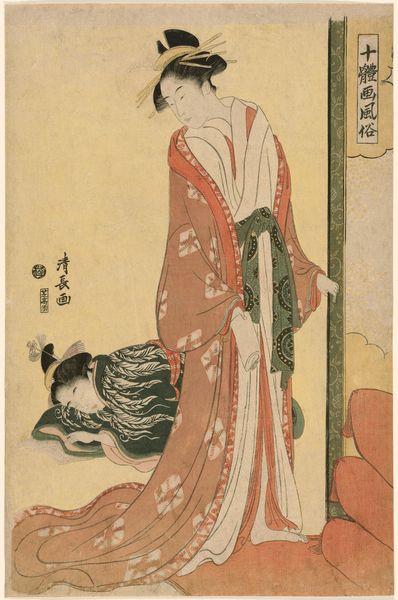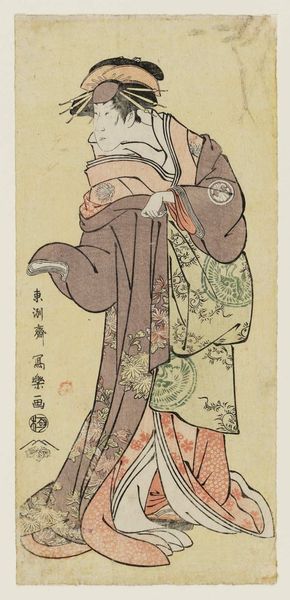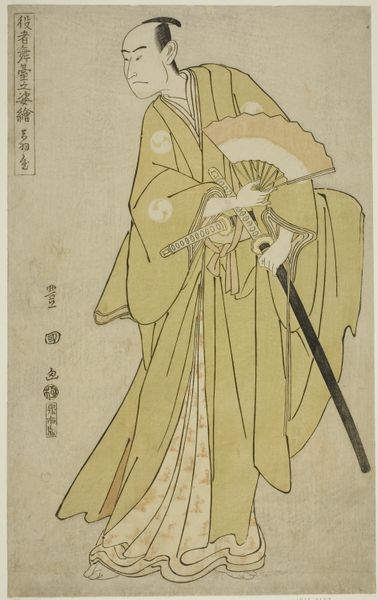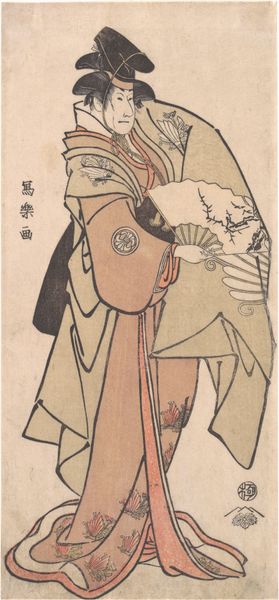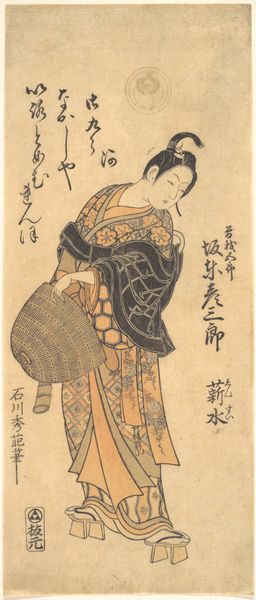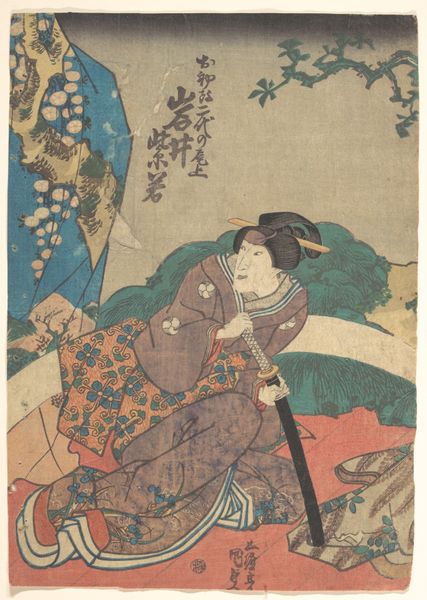
The Jewel River of Plovers (Chidori no Tamagawa), from the series "Six Jewel Rivers in Popular Customs (Fuzoku Mu Tamagawa)" c. 1769 - 1770
0:00
0:00
print, paper, woodblock-print
#
portrait
# print
#
asian-art
#
ukiyo-e
#
japan
#
figuration
#
paper
#
woodblock-print
#
line
Dimensions: 25 × 4 7/8 in.
Copyright: Public Domain
Suzuki Harunobu made this woodblock print, The Jewel River of Plovers, using a technique called *nishiki-e*, or brocade picture. This involved carving a separate block for each color, a painstaking process. The smooth, flat planes of color are characteristic of this method, but that is not to say that the technique is unsophisticated. Careful alignment and the use of translucent inks allowed for subtle layering and shading, creating a sense of depth and texture. Look closely, and you can see how the artist has used the woodgrain to suggest the flow of the river. The *nishiki-e* technique was relatively new at the time, and Harunobu was one of its leading practitioners. His prints were highly sought after, and the demand for them helped to fuel the growth of the commercial publishing industry in Edo-period Japan. The Jewel River of Plovers is a reminder that even the most seemingly simple works of art can be the product of complex and sophisticated processes. By paying attention to the materials and techniques used to create a work of art, we can gain a deeper understanding of its meaning and significance.
Comments
No comments
Be the first to comment and join the conversation on the ultimate creative platform.

